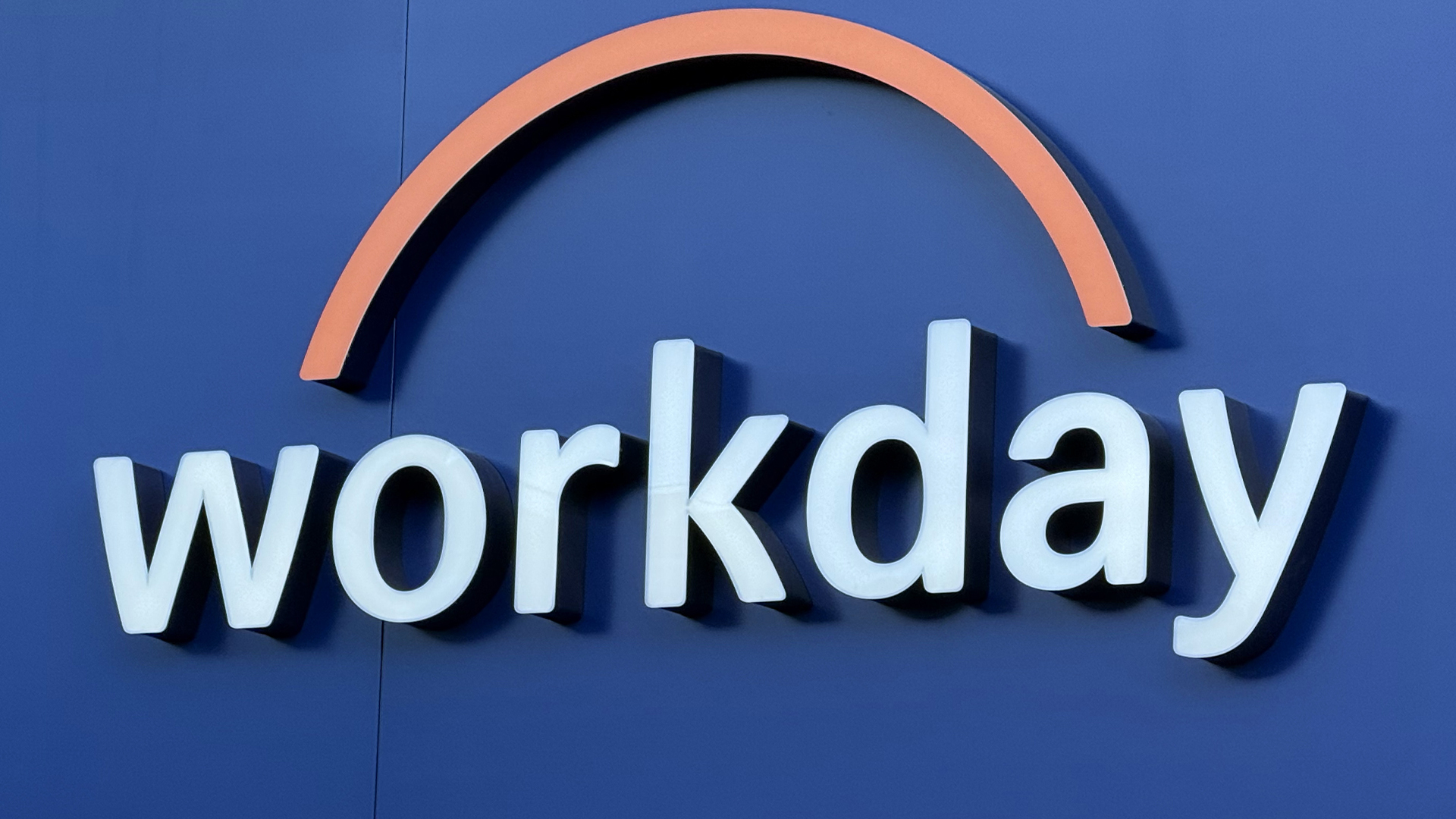The right language to solve tech’s diversity problem
How does the tech industry reverse decades of discrimination? Looking at the language used within firms would be a good start

It took me five years of working in London’s tech scene to realise it wasn’t representative of the wider society it served. On a spring day in 2015, I was sitting at my desk in Amazon’s London office. My colleague Sarah and I were key account managers in the payments department, and together we were huddled by my screen looking at the company’s organisation chart.
We wanted to see how many women were in Amazon’s leadership team. We started at the top of the chart, where CEO Jeff Bezos held a solitary top spot. Beneath him, the next layer of executives were all white men. The layer beneath them showcased a homogeneous group of white men, too. We were disheartened to discover how few women occupied leading roles within the company. What hope did we have of breaking into this gentleman’s club?
A Tech Nation report in 2018 found that women represent just 18% of the UK’s tech workforce, despite representing 49% of the total UK workforce and 51% of the overall UK population. And representation doesn’t improve at senior levels: women hold fewer than a quarter of all the director-level roles in the UK’s tech industry. According to an Inclusive Tech Alliance report published in 2019, Black, Asian and other minority ethnic people represent a mere 8.5% of the tech industry’s senior leaders.
No change
Worse, in the five years since Tech Nation first launched its annual report, there’s been no acceleration in the rate of diversity. No acceleration despite notable campaigns to drive change such as PwC’s Tech She Can Charter urging employers to work together to increase the representation of women workers in tech. No acceleration despite the mayor of London unveiling a toolkit to help organisations become anti-racist workplaces, adding to an existing campaign in place since 2018 to help Black men secure employment in tech.
Several compelling reasons have been cited for tech’s dire state of diversity. Many journalists are quick to point to the STEM gender gap, placing the blame on low numbers of girls taking up relevant subjects at school. Others focus on the lack of role models for women. However, a common thread is the culture of this male-dominated industry. It can feel toxic to many who aren’t represented in the dominant groups, and one way this toxicity shows itself is in the language tech companies use.
As professor Michael Kimmel said: “Privilege is invisible to those who have it.”
From job adverts to programming languages, tech teams are now finally recognising how words can have the power to exclude individuals, and are taking steps to remedy this to promote greater diversity and inclusion within their organisations.
Sign up today and you will receive a free copy of our Future Focus 2025 report - the leading guidance on AI, cybersecurity and other IT challenges as per 700+ senior executives
“This isn’t a place for you”
Ellen Jones is an LGBTQ+ and disability writer, speaker and consultant within the tech industry. She spoke to me about the language used in job adverts and how seemingly innocuous descriptions of team culture can have devastating effects on diversity. “One thing as a disabled, queer woman I find incredibly alienating is when job applications give a really prescriptive company culture, which ultimate boils down to ‘this isn’t a place for you’.”
RELATED RESOURCE

Tech firm Textio offers a solution to this problem. Its software includes a feature called “tone” that helps you recognise hidden gender bias in the language you use in ads. Recognising such implicit bias can be hard on one’s own, so the tool highlights phrases that research has shown impacts the gender balance of applicants.
Applied is another software company helping companies adopt more inclusive language. Its product scans your job description for any language that research has shown to be exclusionary and removes any identifying information from job applications, eliminating implicit bias. Case studies show that this approach works. Diversity VC used its platform to hire a diverse group of interns and shared a rave review of the diversity of applications. “Against the backdrop of an overwhelmingly white, male, privately educated status quo, having 47% female, 70% BAME, 35% socio-economically disadvantaged and 11% LGBT is all the more impressive.”
I used #BlackTechTwitter to ask black technologists what information they paid the most attention to when seeking potential employers. Dozens of people mentioned language as something they looked out for. Yet a quick scan of open tech roles on social media sites showed that many firms aren’t taking action on the inclusion issues that were highlighted in my thread. Tech talent pays attention to the words used across a company’s website and careers page: they look for indicators that it’s diverse, inclusive and has equal opportunities for staff of all backgrounds.
The responses in the Twitter thread revealed that it wasn’t enough for companies to simply state the obvious “equal opportunity employer” line when it comes to inclusion: they need to explicitly show their commitment to inclusion and showcase the actions they have taken, and continue to take, to increase representation. Jobseeking technologists from underrepresented backgrounds are doing their own employer due diligence by looking for the nuances; subtle linguistic indicators that reveal the employer’s inability to check their privilege and optimise for inclusion.
At UK challenger bank Monzo, the team has adopted measures to hold themselves accountable for using inclusive language. Brenda Wong, a member of Monzo’s culture and communications teams, shared examples of the bank’s internal Slackbot (a bot facility in the Slack messaging software), which flags exclusionary language and suggests more inclusive replacements. “If you use the word ‘guys’, a Slackbot message will pop up directing you to an internal explainer about why we don’t use that word at Monzo,” Wong told me.
However, Wong recognises that a Slackbot alone is insufficient to hold the team accountable for always communicating in the most inclusive way. “We explicitly train folks on inclusive language during their induction too, so it’s the standard that’s set from the very beginning. Slackbots are just reminders to help guide behaviour.”
At Brandwatch, where I work as vice president of global community and belonging, members of the Pride committee led a project to update our Slack settings to allow all staff to show their preferred pronouns alongside their display name. As a person with cisgender privilege, I often take for granted the fact that people correctly guess my preferred pronoun when viewing my profile picture. By choosing to display my preferred pronouns she/her, I choose to help normalise the practice. This makes it easier for the next person who joins our team whose preferred pronoun could be they/them or not obvious to discern by sight.
Coding out prejudice
Motivated by the Black Lives Matter movement in 2020, Brandwatch’s Engineering Diversity and Inclusion Committee decided to change the terminology it used on a regular basis. It realised terms such as “master/slave” could be replaced with language that was more inclusive to colleagues and the wider tech community. The solution? Alternatives to terminology categorised by compulsory and suggested, examples of which you can view in the box to the left. Since updating terminology can create a lot of tech debt, their aim was to make these language changes going forward in new and existing code repositories.
The 2020 Black Lives Matter movement was a catalyst for sparking conversations within the tech industry about how to be anti-racist. Dr Ronda Zelezny-Green, a digital development and tech policy expert, noticed more colleagues and more tech professionals in her network discussing racism and allyship in the industry following Black Lives Matter. As a Black woman, and the only Black woman at her level of seniority in her organisation, she tells me she found this change a hopeful one, until she tried to channel this energy into a problem she discovered at work.
While the Black Lives Matter movement was still dominating headlines, she learned that her company’s IT department used the terms “whitelist/blacklist” in the context of emails that were whitelisted and trusted, or blacklisted and blocked. As a master’s-level linguistics expert she recognised the damaging consequences of this connotation. “The implication is that white is right, and that’s not okay.”
She suggested that her IT team find alternatives. She sparked the conversation to show how anti-Blackness can manifest in seemingly harmless ways. But what she intended to be a conversation about racism quickly became a conversation about processes and industry standards. She tells me she felt the more important issue had been derailed. “Language can be inclusive or exclusive, but the tech industry can delay or push back on language changes, getting mired in the process and clinging to outmoded standards. When this happens, the tech industry is showing us that inclusive language is not a priority.”
I asked tech professionals on Twitter to share examples of their teams taking action to use more inclusive language. I received hundreds of responses, indicating that not all employers are turning a blind eye to the problem. Tech CEO Avery Francis told me “we care deeply about this at Bloom”, the workplace design consultancy she founded after her own negative experiences navigating the tech world as a woman of colour. “Some examples: we don’t address groups of folks as ‘guys’ and practice calling people in when they do. We are learning more about ableist language and replacing words such as ‘crazy’ with ‘wild’ and using ‘position’ instead of ‘stance’.”
Camille Fabreguettes, a full stack engineer at Sqreen, told me they no longer use whitelist/blacklist on her team. Ashraf Abed, the founder of Debug Academy explained that “we updated our curriculum to teach ‘main’ instead of ‘master’.” Arno Fleming, tech lead at The Next Closet, told me “we’ve replaced ‘junior’ and ‘senior’ because they focus most on age and potentially gender.
“We’re hoping that ‘starting’ and ‘experienced’ can communicate the level better. And we’re hoping to introduce a ‘guys jar’ after lockdown – anyone using that word can contribute €2 to a team outing.”
Recognising privilege
It’s important to remember the real impact here goes beyond semantics. By choosing to recognise the privilege embedded in language, we are choosing to challenge injustice and create a more equitable and inclusive industry. I spoke to Claudia Alick, an intersectional inclusion expert, about why the language we choose is crucial to make tech more inclusive. “Changing vocabulary is not the point,” Alick said. “The act of explicitly choosing justice-based language remaps implicit meanings and allows us to acknowledge and remove colonising racist, sexist frameworks. This is recoding the performance of our communication.”
In 2018, Buffer’s director of people, Courtney Seiter, published the article An Incomplete Guide to Inclusive Language For Startups And Tech. She wrote: “Language is one of the most powerful tools we have as humans. Historically, language has left many out. Inclusive language seeks to treat all people with respect, dignity, and impartiality. It is constructed to bring everyone into the group and exclude no one.”
The language we choose to use at work as tech professionals says a lot about what matters to us. It says a lot about what is important. And if we aren’t making the effort to make our language inclusive, we’re saying that inclusion doesn’t really matter.
-
 What businesses need to know about data sovereignty
What businesses need to know about data sovereigntyWithout a firm strategy for data sovereignty, businesses put their data and reputations at risk
-
 Anthropic says MCP will stay 'open, neutral, and community-driven' after donating project to Linux Foundation
Anthropic says MCP will stay 'open, neutral, and community-driven' after donating project to Linux FoundationNews The AAIF aims to standardize agentic AI development and create an open ecosystem for developers
-
 Is diversity still a challenge in the channel?
Is diversity still a challenge in the channel?Industry Insights Despite progress, diversity remains a challenge in the tech channel, as women represent less than a quarter of the UK’s tech workforce and still face structural and cultural barriers
-
 Enterprises are cutting back on entry-level roles for AI – and it's going to create a nightmarish future skills shortage
Enterprises are cutting back on entry-level roles for AI – and it's going to create a nightmarish future skills shortageNews AI is eating into graduate jobs, and that brings problems for the internal talent pipeline
-
 AI resume screening, recruiter chatbots, and ‘ghost jobs’ are causing havoc for struggling entry-level workers
AI resume screening, recruiter chatbots, and ‘ghost jobs’ are causing havoc for struggling entry-level workersNews A new report shows employers are cutting back on entry-level hiring, but expect things to improve eventually
-
 Workday snaps up AI-powered conversation recruitment platform, Paradox
Workday snaps up AI-powered conversation recruitment platform, ParadoxNews Workday will integrate Paradox’s AI-driven candidate experience agent to help deliver talent faster
-
 The Channel Recruiter and Nebula debut new global talent resourcing solution
The Channel Recruiter and Nebula debut new global talent resourcing solutionNews Tech Talent on Tap aims to provide channel firms with on-demand access to elite technical professionals from around the world
-
 Women in tech are plagued by imposter syndrome – here are three tips to overcome lingering doubts
Women in tech are plagued by imposter syndrome – here are three tips to overcome lingering doubtsNews Imposter syndrome among female tech workers gets worse as careers progress
-
 ‘Employees aren’t having it’: European workers are pushing back on the US-style ‘always on’ work culture – many are worried about the rise of ‘hustle culture’ and a third would quit if forced back to the office
‘Employees aren’t having it’: European workers are pushing back on the US-style ‘always on’ work culture – many are worried about the rise of ‘hustle culture’ and a third would quit if forced back to the officeNews New research shows European workers are pushing back on the 'always on' culture and fear US-style corporate policies creeping into workplaces.
-
 Women show more team spirit when it comes to cybersecurity, yet they're still missing out on opportunities
Women show more team spirit when it comes to cybersecurity, yet they're still missing out on opportunitiesNews While they're more likely to believe that responsibility should be shared, women are less likely to get the necessary training